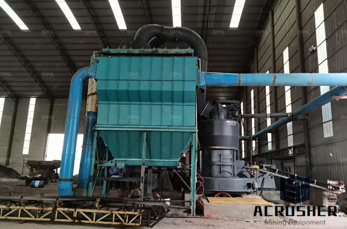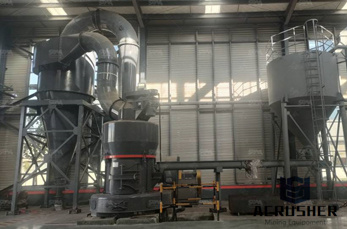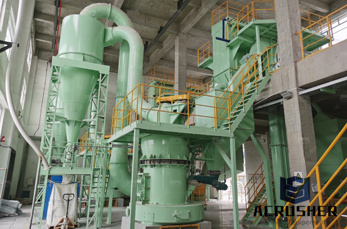Mustknow: The cost elements of cement Market Realist
Aug 15, 2014· The second major component in the production of cement is the cost of raw materials. The primary raw material that''s used is limestone. Raw materials account for 30%–40% of .
 WhatsApp)
WhatsApp)
Aug 15, 2014· The second major component in the production of cement is the cost of raw materials. The primary raw material that''s used is limestone. Raw materials account for 30%–40% of .

Aug 30, 2012· Generally cement plants are fixed where the quarry of limestone is near bye. This saves the extra fuel cost and makes cement somehow economical. Raw materials are extracted from the quarry and by means of conveyor belt material is transported to the cement plant. There are also various other raw materials used for cement manufacturing.

Creating value from raw materials As a trusted automation supplier, Siemens provides comprehensive, fieldproven solutions to the unique challenges faced by our mining, aggregate and cement customers.

Cement is the most widely used material in the construction industry. It is a very crucial ingredient because only cement has the ability to increase the viscosity of concrete and make buildings have a sturdy structure. In cement plant, cement manufacturing needs to go through the following six processes: Raw Materials Mining

Jul 31, 2013· MANUFACURE OF PORTLAND CEMENT:Raw Materials: The raw materials required for cement manufacture are. Lime stone which provides calcium. Clay which provides aluminium and is ...

Cement manufacturing is the source of 5% of global CO2 emissions. The cement industry is a natural producer of CO2: 60% of emissions are due to the transformation of raw materials at high temperatures (the "decarbonation" of limestone), 40% result from the combustion required to heat the cement .

Cement manufacture, like many other manufacturing processes, begins at the mine, where the raw materials like limestone, silica, aluminates, feric minerals and others are obtained. Some typical materials used for calcium carbonate in cement manufacturing are .

China University of Mining and Technology ... of cement and while limestone and other raw materials of Passu and MorkhunGircha is not suitable to be used as raw material for cement industry. ...

Mining methods used in the extraction equipment for a cement raw material considered ways rather easy and inexpensive and most commonly us ed material extracted from quarries.

It''s a true winwin: renewable energy can be utilised in mining operations while producing the raw materials needed for the climate change mitigation. Wärtsilä''s flexible power plants make it possible to integrate renewable energy and reduce operational costs and emissions in the path towards a renewable energy future.

Monitor raw material feed to crushers, mills, screens, preparation plants, and coalfired power plants to help ensure precise feeding of process materials and maintain product quality. Thermo Scientific Ramsey conveyor belt scales provide vital information for the effective management and efficient operation of cement raw material handling.

Competitiveness of the cement and lime sectors. Cement production the majority of EU cement producers operate on a global level, giving them access to global best practice and technology. Raw materials are extracted mainly onsite, which avoids transportation costs and environmental damage.

Geology, Mining and Raw Materials National Council for . The Geology, Mining and Raw Materials (GMR) programme of Centre for Mining, Environment, Plant Engineering Operation (CME) has been constantly providing industrial and technological support in the areas of cement and building materials starting with identification of potential sites for green field projects, geological investigation ...

The Geology, Mining and Raw Materials (GMR) programme of Centre for Mining, Environment, Plant Engineering Operation (CME) has been constantly providing industrial and technological support in the areas of cement and building materials starting with identification of potential sites for green field projects, geological investigation, exploitation of raw materials, computer aided deposit ...

Supply of Raw Materials for Cement Production PEC Consulting is uniquely qualified to provide COMPREHENSIVE CONSULTING SERVICES ON RAW MATERIALS FOR THE CEMENT INDUSTRY In addition to exploration and geology, mining and mine planning, we use our vast knowledge of the process for cement manufacturing to develop the

Materials are extracted / quarried / recovered and transported to the cement plant. 2 Crushing and milling. The raw materials, limestone, shale, silica and iron oxice are crushed and milled into fine powders. 3 Mixing and preheating. The powders are blended (the ''raw meal'') and preheated to around 900° C using the hot gases from the kiln ...

Raw materials used for manufacturing of Portland cement are found naturally in the earth''s crust. It is made primarily from calcareous and argillaceous materials and gypsum. Calcareous materials contain limestone or chalk while argillaceous materials comprise an oxide of silicaalumina and iron. Both are found as clay or shale.

The basic materials sector is a category of stocks for companies involved in the discovery, development, and processing of raw materials. The sector includes companies engaged in mining and metal ...

for the cement production. Silica, alumina, and iron are considered to be other raw materials. The lime stone used for cement manufacturing contains 7590 % of CaCo 3 and remainder is MgCo 3 and impurities [11]. Raw material is extracted through mining and quarrying which

Of the 31 cement facilities in California, 11 are involved in full cement operation from raw materials. The production at the remainder of the facilities involves grinding and readymix of clinker that is produced in other facilities, either domestically or abroad. The 11 full operation

At the same time, the cement industry is facing challenges such as cost increases in energy supply (Lund, 2007), requirements to reduce CO 2 emissions, and the supply of raw materials in sufficient qualities and amounts (WBCSD, 2008). In this chapter, the environmental impact of cement production will be described.

Cement is produced from raw materials such as limestone, chalk, shale, clay, and sand. These raw materials are quarried, crushed, finely ground, and blended to the correct chemical composition. Small quantities of iron ore, alumina, and other minerals may be added to adjust the raw material composition.

The capitalintensive cement industry needs to secure valuable deposits over the long term. Close geographical links between cement production and mining sites is also extremely important. Short routes for supply of raw materials take pressure off of traffic volumes and reduce transportrelated emission of pollutants.

materials The main raw materials used in cement manufacture are limestone, shale, clay, sand and iron ore. These natural materials are extracted from mines and transported to the cement plant, where they are blended to manufacture the required cement quality.
 WhatsApp)
WhatsApp)